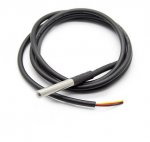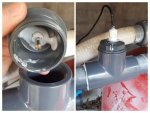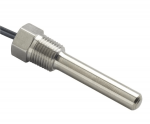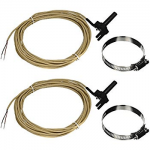I want to add a temp sensor to the pool pipes and was a bit unsure how to do that.
I ended up with simply drilling a hole in the pipe, putting the sensor in and trying my best to glue it up with PVC glue. But to be honest I'm not feeling very secure about this.. Any one else who have done something similar?


I have seen a few others using some sort of threaded insert, but I have no threading bits to cut that with.
I ended up with simply drilling a hole in the pipe, putting the sensor in and trying my best to glue it up with PVC glue. But to be honest I'm not feeling very secure about this.. Any one else who have done something similar?


I have seen a few others using some sort of threaded insert, but I have no threading bits to cut that with.





